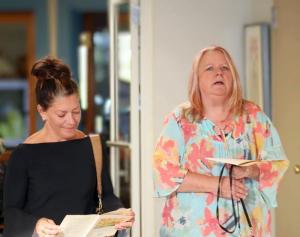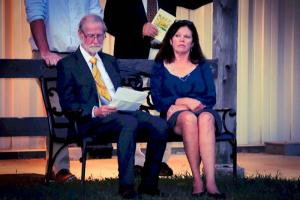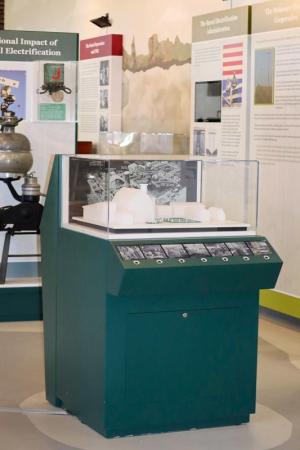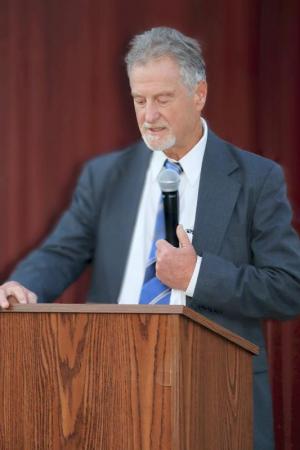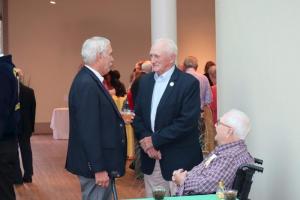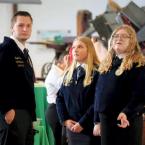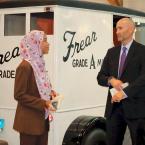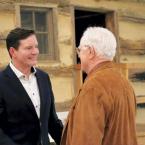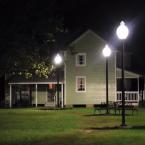The Delaware Agricultural Museum and Village debuted a large-scale indoor/outdoor exhibit Oct. 7 that explores the life-changing impact of rural electrification on Delaware agriculture and the state’s rural communities. Then One Day the Lights Came On is a journey that leads visitors from the late 1930s, before electricity was widely available in the state, through the present-day focus on renewable, clean sources of energy. The exhibit curator is Heidi Nasstrom-Evans of Horizon Philanthropic in Lewes, and the designer is Karen Carney, Art of Area Design owner.
The exhibit follows the rural electrification movement in the United States and the 1936 formation of the Delaware Electric Cooperative, which introduced power to thousands, modernizing farming and rural life in Sussex, Kent and lower New Castle counties. As the nation emerged from the Great Depression, the electrified farm symbolized the ethos of America’s agrarian past as well as the promise of scientific and technological advances to boost efficiency and productivity while bringing new comforts and relief from the constant drudgery of rural life.
Based on original research, this exhibit includes several interactive features such as period films, photographs and radio broadcasts produced by the Rural Electrification Administration; aspects of President Franklin Roosevelt’s New Deal; and a kiosk covering the 1939 New York World’s Fair’s futuristic look at an electrified farm, which predicted the post-World War II developments that brought science, technology and modern business practices to farming. Highlighting Delaware’s present-day commitment to clean energy are exhibits on Delaware Electric Cooperative’s solar farms and wind turbines, and Energize Delaware’s Zero Energy Modular Homes that produce as much energy as they use!
Museum Executive Director Carolyn Claypoole said, “This fascinating interactive exhibit marks the beginning of new and expanded educational programming at the Delaware Agricultural Museum and Village for K-12 and college students, as well as an enhanced visitor experience for the general public. The Delaware Agricultural Museum is not just about the past. We are now able to bridge the gap between the past, present and future with subject matter that resonates with patrons of all ages. For those who think the topic of rural electrification is a yawn, dig a little deeper into the subject matter, and you will quickly become captivated and want to learn more.”
This spring, Claypoole gathered oral histories from Delawareans born and reared in rural areas of the state. Theirs are the stories of life before electricity, when their families endured physical drudgery, unhealthy living conditions and daily discomforts. Families milked cows by hand, using only kerosene lanterns for light. Mothers cooked over wood-burning stoves. Children pumped water into buckets and carried them to the kitchen because homes lacked indoor plumbing. The family icehouse or well provided the only refrigeration. Visitors can stop by the oral history listening station to hear some of these stories, while others play over the radio in the museum’s 1893 farmhouse.
“The oral histories are especially poignant because they are real stories of life in rural Delaware from the people who lived it, and they bring to life the theme of the exhibit,” said Claypoole.
In his remarks to guests attending the opening event, Delaware Agricultural Museum Association Board President Grier Stayton brought the importance and impact of electricity into modern-day focus: “You know electric service is a miracle when you stop to think about it. But no one does! We take it for granted until we lose it. Our most recent reminder came in the form of Hurricane Ian, where over 2 million Floridians lost power.”
Stayton spoke of Delaware’s a diverse ag economy, but noted it’s predominantly based on broiler chickens and the grains needed to feed the 150 million of them grown in the state each year. He said, “The economy would be very different than what it is today without automatic feeders, waterers, fans and now computers used to monitor the chicken houses. Grain production in Delaware is also very dependent on electric power. Of the 500,000 acres in cropland, about 175,000 acres are irrigated, predominantly by electric power.”
The Oct. 6 preview event launched the new permanent exhibit in the museum’s main hall, complemented by a series of electric exhibits outdoors in the rural village. The piece de resistance was the dramatic inaugural lighting of the museum’s historic village grounds and buildings, an achievement that was months in the making. Event attendees included lawmakers from across the state, business leaders and private individuals, all of whom demonstrated the broad constituency that supports the museum.
The Delaware Agricultural Museum’s rural electrification exhibit will continue to expand as companion displays are developed and installed. All will offer opportunities for business and individual sponsorships; for details, go to agriculturalmuseum.org.














 for a first time view of the store at night (1).jpg)
